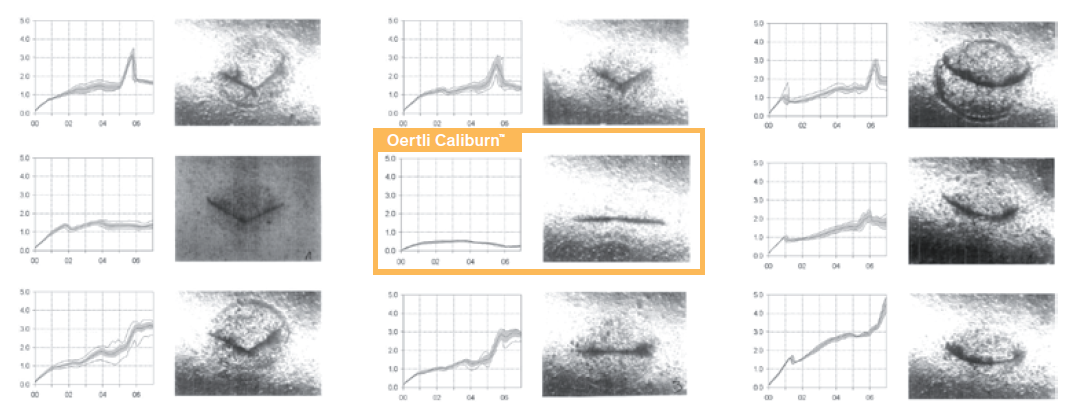Caliburn trocar systemS
Thanks to the lance-shaped blade, the Caliburn Trocar System has a high cutting force and consequently reduces the penetration force into the sclera 1. The optimal blade geometry creates an incision into the sclera with a low penetration force for the trocar, meaning insertion is easy 1. Reliable holdability in the incision is also ensured during surgery *. Thanks to the thin tunnel incision by the lance-shaped blade, there is good postoperative wound closure *.
Additionally, the integrated self-sealing membrane prevents the leakage of BSS, air and oil, which helps to maintain the IOP *. The patented snap lock enables the infusion tube to be securely connected and flexibly reconnected within the trocar system *.
Instruments and accessories

| Caliburn trocar system, disposable | |
|---|---|
| VV123311 | Caliburn trocar system 23G, self-sealing, sterile/single use, box of 10 |
| VV125311 | Caliburn trocar system 25G, self-sealing, sterile/single use, box of 10 |
| VV127311 | Caliburn trocar system 27G, self-sealing, sterile/single use, box of 10 |
| VV123211 | Infusion line 6 mm for Caliburn trocar system 23G, sterile/single use, box of 10 |
| VV125110 | Incision template for Caliburn trocar system, sterile/single use, box of 10 |

| Single trocar with incision knife, disposable | |
|---|---|
| VV123312 | Single trocar with incision knife for Caliburn trocar system 23G, self-sealing, sterile/single use, box of 10 |
| VV125312 | Single trocar with incision knife for Caliburn trocar system 25G, self-sealing, sterile/single use, box of 10 |
The independent study confirms that the lance-shaped blade of the Caliburn Trocar System has a remarkably low penetration force and high cutting force compared to other 23G trocar systems:
- 9 types of commercially available ophthalmic 23 G trocar system investigated
- Analysis of different designs and geometries
- Penetration force measurement

Twenty-three-gauge trocar systems with penetration force diagrams and cut images. The left row shows three back bevel trocar systems from Geuder, Alcon, and Fritz Ruck. The middle row shows the back bevel from Oertli, the lancet bevel from Oertli, and spear bevel from Alcon. The right row shows three spatula bevels from Eyetech, DORC, and Bausch and Lomb 1.
Illumination
The choice of the right light source is decisive for achieving high-quality transscleral and intraocular illumination.
Vitreoretinal surgery
In vitrectomy, the OS 4 impresses thanks to its established fluidics concept and Power LED light source *.